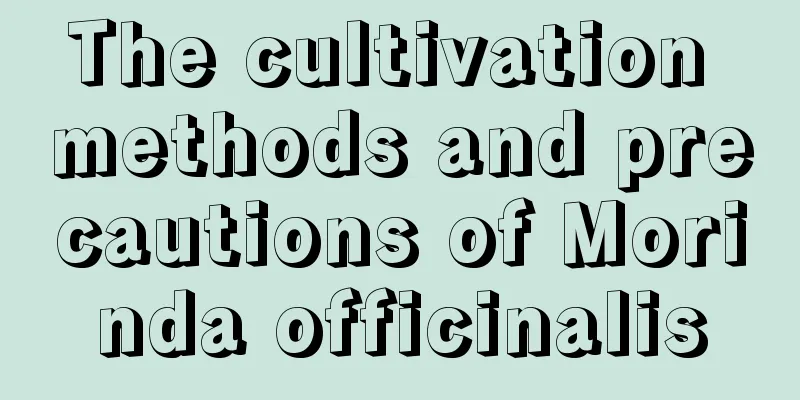The cultivation methods and precautions of Morinda officinalis

1. SoilTo grow Morinda officinalis, you need loose, fertile and well-drained soil. 2. PlantingIt is best to choose to plant in spring, so that the survival rate is higher. If you choose to plant in summer, it is best to do it in rainy weather to ensure better survival. If it is sunny, you must use yellow mud to prevent the roots from drying out, which will affect its survival. 3. FertilizationApply fertilizer 1-2 times in spring and summer, with nitrogen fertilizer as the main fertilizer. In autumn, compost or soil fertilizer should be applied. Plants between 4 and 6 years old should be fertilized once in spring and summer, with phosphorus or potassium fertilizers being the main ingredients. 4. WeedingWeeding should be done in time within two years of planting, about 2-3 times a year. Do not damage its roots when weeding, and be careful when weeding. 5. NotesWhen cultivating Morinda officinalis, you must pay attention to preventing and controlling the occurrence of stem rot. You must increase fertilization to enhance its disease resistance. After the disease occurs, you must dig it out with its roots and disinfect it to avoid harming other plants. You can use Bordeaux mixture to spray it for prevention and control. |
<<: How to cultivate Yuchun stick
>>: How to cultivate red fruit
Recommend
If you have these 5 kinds of flowers at home, you can even save money on buying medicine!
honeysuckle Effect: Honeysuckle is an ancient Chi...
The flower language and symbol of wintersweet, the meaning of giving wintersweet to girls
1. Flower Language Wintersweet has many flower me...
Why are the leaves of the bird of paradise turning yellow, burnt and dry?
Bird of Paradise is famous for its upright shape ...
When is the best time to transplant honeysuckle (which month has the highest survival rate for honeysuckle)
When is the best time to plant honeysuckle? Honey...
How to propagate trees and what to pay attention to
Tree propagation method There are four ways of tr...
Is garlic a fruit or a vegetable?
Is garlic a fruit or a vegetable? Garlic is a veg...
What is the best fertilizer for peace lily?
Fertilization time for peace lily Fertilization o...
Why do the leaves of the fragrant vine turn yellow?
1. Phellodendron chinense If its leaves turn yell...
How to grow Schefflera and what to pay attention to
Growth habit of Schefflera Schefflera prefers war...
How to identify Feicai
1. Leaves The leaves of the plant are alternate, ...
Huang Qiuying's breeding methods and precautions
Growth habit This flower likes light. If there is...
Orchids--How to grow fleshy roots
How to introduce roots? Many flower lovers will e...
Why doesn't the gardenia bloom?
Reason 1: Improper water and fertilizer During th...
Watering method of bicolor jasmine
Watering tips Quantity requirements The origin of...
Gardenia cultivation methods and precautions
1. Flower soil Gardenia prefers slightly acidic s...









